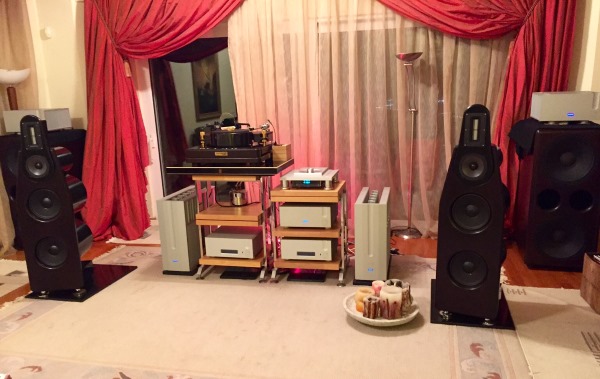During my recent interview with WBF, I think additional clarification of why relying on audiophile sonic terms like detail, pinpoint imaging, crisp leading-edge transients, black background, and slam to describe the attributes of component performance is counterproductive if one’s goal is to reproduce music in your home to a believable level. It is interesting to note that Harry Pearson was not the originator of these terms. He was rather more oriented to talking eloquently about the emotional experience of listening to music performed on a believable level through a home audio system. The press’s sonic terms really came from those who have unsuccessfully tried to emulate him.
Because our industry struggles to grow beyond its infancy, quite a few high-end audio companies do not yet have the resources or know-how to promote their own products. Many unfortunately have relied and rely upon the audio press to do their bidding. For our industry to move closer to our goal of helping our customers suspend their disbelief that they are only listening to a hifi, more manufacturers need to grow beyond depending on the press to build their notoriety. Instead, more designers and manufacturers should be telling their own stories more effectively with the power of videos, interviews, the internet, and customer events in listening conditions that are more acoustically controlled than hotel rooms. With a handful of exceptions, members of the audio press do not have a listening environment that is capable of accurately reproducing a wide variety of source material at believable levels, nor do they typically have a reference standard system of components in place that is on a level that would qualify them to judge the performance of a well-designed audio component. Quite a few of them also do not have extensive and ongoing live acoustic music listening experiences. It perplexes me why so many manufacturers still run to the press for approval, and some dealers bank on reviews to attract customers. In contrast, Jacob Heilbrunn comes to mind as an audio writer who has broken the mold of the “amateur audio press.” He has a professionally designed listening studio that helps him become immersed in all types of music listening experiences. He also has an established reference system and a huge, eclectic music collection. He’s also an articulate, knowledgeable, and creative professional writer who attends a lot of live music performances. Are there others like Jacob out there?
Because more than a few manufacturers rely upon good reviews to keep their public interested in their brand, some of these companies I fear calibrate their products to get good reviews by designing to the press’s fabricated sonic terms. By and large, the audiophile publication readership has likewise been “schooled” by the articles they read to seek out these qualities — which are just words that might appeal to the front of our brains, but do not reach our emotional engagement centers. Using the press’s own terms to describe the listening experience is like residing in a tiny echo chamber.
Here’s why the high-end audio echo chamber seems to be so well sealed from music-loving interlopers. Unfortunately, in most homes where there is a substantial audio system set-up in rooms that are built according to standard residential construction methods, it is very unlikely that a person can play a wide range of different types of music at believable volume and dynamic levels and achieve across the board full natural tonal balance; i.e., reproduce the critical 100Hz -1000kHz range to the same level that it is actually recorded on the source material. The energy that results from amplifying the critical emotional-connection frequencies overloads most of these rooms resulting in frequency nodes and cancellations and out-of-phase reflections that cover up the very qualities that the audio press has tried to teach us should be the priority; hence, the solution to this conundrum is to strip away that energy, the life of the music, that is so important to creating an emotional connection by selecting components that reproduce music in a way that is natively leaner than what is on most source material and by speaker set-ups that emphasize the frequency extremes.
One can only imagine how disheartened some music-loving audiophiles might be when they discover that in their home environment, they can play perhaps a dozen songs from a small handful of albums that deliver truly musically satisfying results. Some have spent hundreds of thousands of dollars on individual pieces of equipment that have been deemed ground-breaking by the audio press only to find that their systems and listening environment are unable to reproduce music in an emotionally compelling way. This is not a sustainable model for customers, dealers, or manufacturers. No one has told the simple truth: that everything matters, including listening space.
Does everybody need to invest in a professionally designed, purpose-built listening room to achieve a really satisfying level of music reproduction at home? If one wants to experience the ultimate in music reproduction from today’s best source material and components, the answer is “yes”, but there are many musically enthralling stops along the way that are far more affordable and achievable.
To be continued . . .
View attachment 106889


